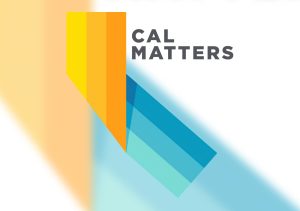Donations by developers for Santa Clara Unified school construction – above and beyond state-allowed development fees – are quietly setting new precedents in Santa Clara.
In September, Irvine donated an additional $5.6 million to SCUSD for its Santa Clara Square apartment complex, slated to open in 2018. Related Companies followed suit in June by promising to double the school development fees it will pay for its 240-acre City Place project.
Such donations demonstrate community partnership, developers say. “Quality public schools are essential to the health of Santa Clara, which is why we are delighted to provide this $5.6 million voluntary contribution,” said Irvine VP Carlene Matchniff.
Such donations aren’t new. In 2005 three Arizona school districts established “voluntary developer donation” funds when an Arizona court ruled school districts couldn’t charge development impact fees, according to an October 2005 story in the Tempe Arizona East Valley Tribune. Developers alleged that the donations masked a pay-to-play system and would raise homebuyers’ costs.
In California, developer donations are one way to work around California’s dysfunctional system of school funding. School districts receive about 40 percent of property tax revenues within its boundaries but, by state law, can’t use that revenue for new school construction.
School construction funding is a tortuous maze of state-set developer fees, state matching funds, and local bonds and parcel taxes – described by UC Berkeley’s Center for Cities and Schools as systematically “inadequate” and “inequitable;” offering just enough money to keep schools perpetually in a “steady state of repair.” In a 2015 study the California Legislative Analyst’s office (LAO) called California’s school construction funding an “administrative and programmatic labyrinth.”
Until the late 1940s California school construction funding was a local affair. In 1947 the legislature created the State Allocation Board (SAB), providing school construction loans funded by state bonds.
When 1978’s Proposition 13 denied school districts the ability to issue bonds, Sacramento began distributing school construction grants. Even after districts regained the ability in 1986 to issue bonds, Sacramento continued to provide construction grants via voter-approved bonds.
In 1998 Sacramento created the School Facility Program; reducing the threshold to pass school bonds to 55 percent and providing school construction funding via state grants, local matching funds and three levels of developer fees. Fees can be levied to cover up the entire cost of school construction for new residential development, but they must be justified by individual districts by financial analysis, projected enrollment growth and current conditions.
The SFP provides per-student grants for 50 percent of the costs of new construction, and 60 percent of the costs of modernization. But it also restricted some of the funding to specific categories like seismic upgrades and charter schools. And districts must submit specific project plans to apply.
Funding is allocated based on first-come, first served – not needs – and districts must provide matching funds. This system, says the LAO, gives richer districts the advantage of a deeper financial well to draw on for matching funds.
Applying for these funds has only grown more complicated since 1998, according to the LAO, in some cases requiring school districts to work with ten or more state agencies. Again, wealthier districts benefit because they can afford staff time to navigate the administrative maze and develop the detailed proposals.
Districts can assess 100 percent of construction costs – Level Three fees – only if the SAB “certifies” that state new construction funding has been exhausted. The program was out of grant funds in 2012, but didn’t make that certification until May 2016. As a result, district’s couldn’t impose Level Three fees or get any new state construction funding.
The SAB’s May certification faced a legal challenge from the California Building Industry Association (CBIA) when the trade group got an injunction blocking Dublin Unified school district from imposing Level Three fees. In November, an appeals court ruled against the CBIA but when voters passed state Proposition 51, authorizing $9 billion in new school construction bonds, there was money in the fund again and, therefore, Level Three development fees can’t be levied.
Four of the five top financial backers of Prop 51 were builders and real estate companies and trade organizations.
Prop 51 would seem to auger new funding for new schools, but some find that’s not the case. It just put more money into the system, leaving the same inequities in place, says the Center for Cities and Schools. Even before Prop 51 passed, the SAB already approved over $1 billion in new un-funded projects, according to a recent report in the San Francisco online Examiner.
Gov. Jerry Brown opposed the measure for these reasons and, he says, because developers should share more of the school construction costs.
California school districts are completely separate and autonomous from cities, and have no power to stop developments within their boundaries. But education strongly influences how people vote across the board; motivating municipal elected officials to exert their influence on behalf of constituents’ concerns.
Developers’ voluntary one-off contributions don’t solve systemic problems, but barring restructuring of the current system, they’re one of the few answers for school districts.











0 comments